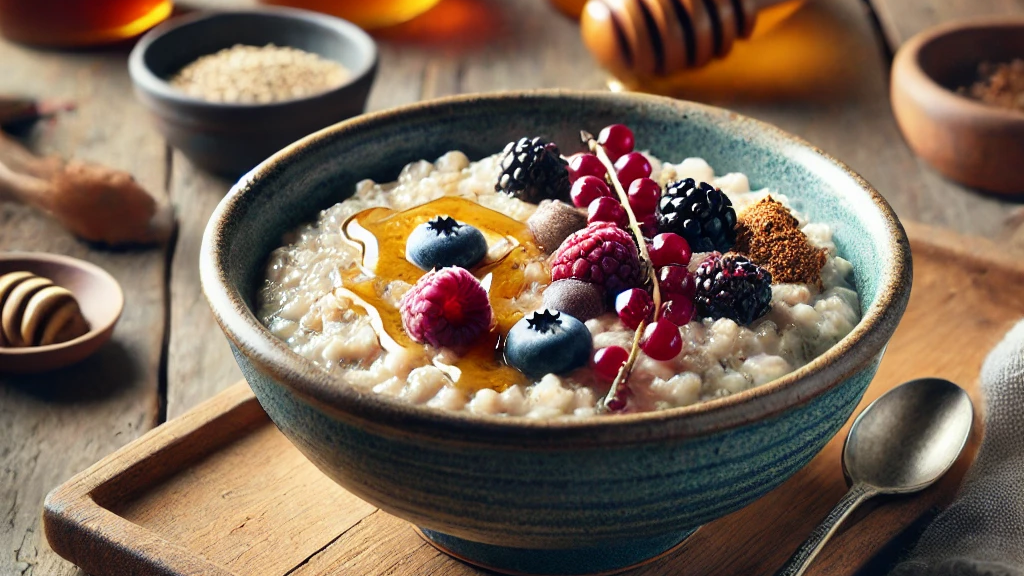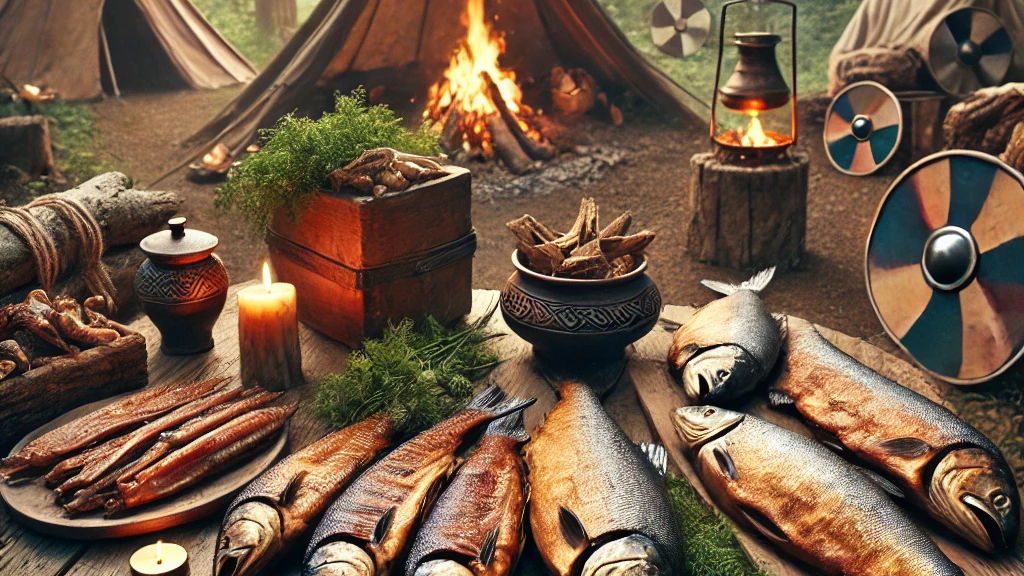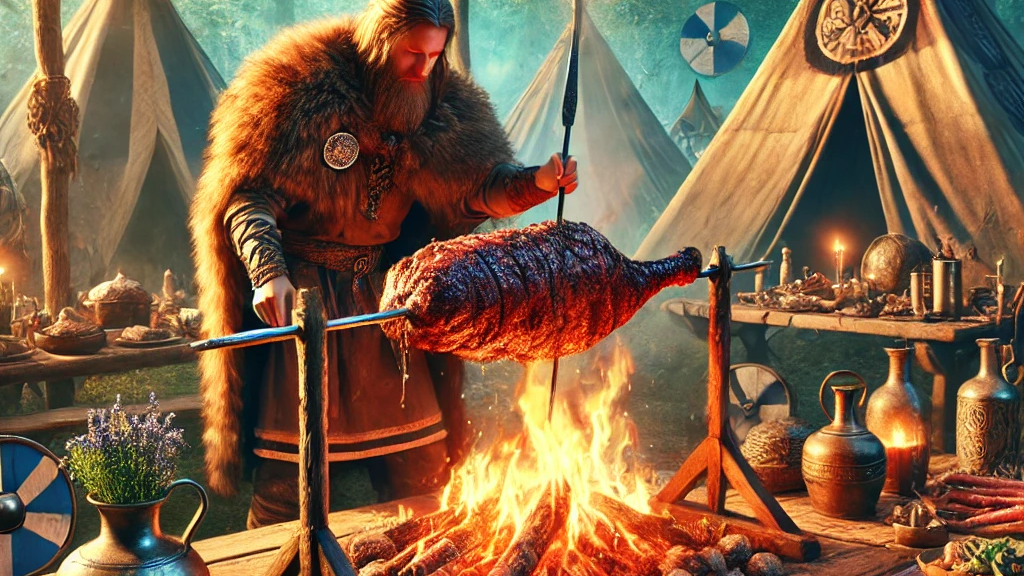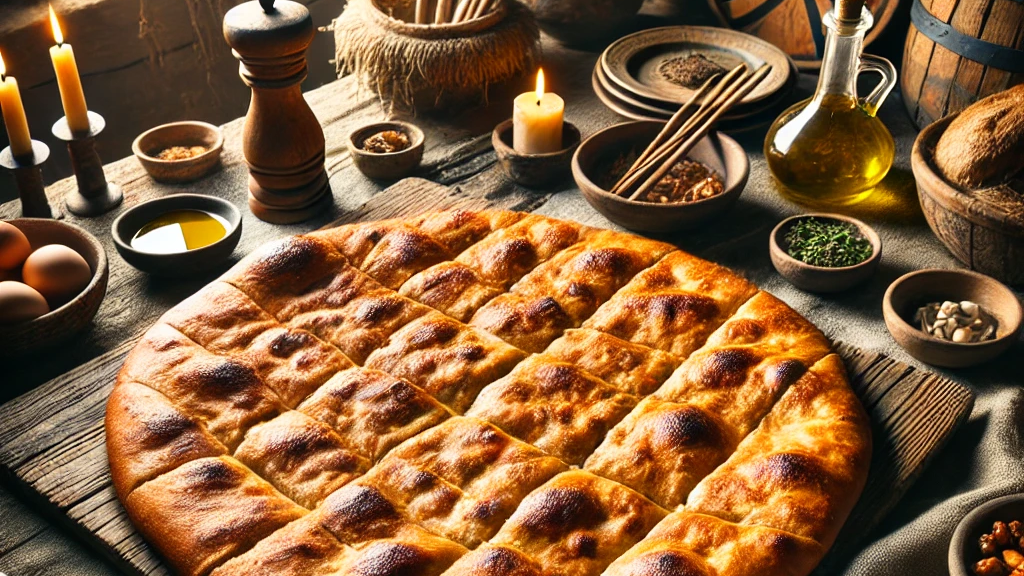The Vikings, known for their seafaring adventures and exploration, had a rich and varied diet that reflected their agricultural practices, regional resources, and trading networks. Living in a time when self-sufficiency was crucial for survival, the Vikings relied on local ingredients and seasonal produce.
Their diet included a wide array of foods, from hearty grains to fresh seafood, shaped by the harsh climates and environments of Scandinavia. In this blog post, we will delve into what the Vikings ate, highlighting their dietary staples and traditional dishes.
The Viking Diet: A Balanced and Resourceful Approach
The Viking diet was primarily based on what they could grow, raise, and catch, leading to a diverse menu. Grains such as barley, rye, and oats formed the foundation of their meals, often made into porridge or bread.
Vikings also raised livestock, including cattle, sheep, and pigs, which provided meat, milk, and cheese. Their diet was complemented by wild game, fish, and foraged plants, such as berries, nuts, and herbs.
Preservation methods, such as drying, smoking, and fermenting, played a significant role in ensuring food lasted through long winters. The Vikings were adept at utilizing the resources available to them, creating meals that were not only nourishing but also flavorful.
Here are some of the notable dishes that featured prominently in their diet:
1. Grød (Viking Porridge)
Grød, or porridge, was a staple in the Viking diet. Made primarily from barley or oats, this hearty dish was often boiled in water or milk to create a thick, comforting consistency.
Historical accounts reflect its importance, with one Norseman saying, “Let the porridge be ample, for it is the heart of the harvest.” This illustrates how grød was not only filling but also a versatile base for various toppings, allowing for adaptation based on seasonal availability.
Archaeological findings have revealed remnants of grains like barley and oats in Viking settlements, confirming their reliance on these cereals as dietary staples. Grød was a reflection of the agrarian lifestyle of the Vikings, underscoring their connection to the land and its resources.

Vikings would sweeten their porridge with honey or berries, and sometimes add nuts or seeds for extra flavor and nutrition. Grød was not only filling but also versatile, serving as a base for various toppings depending on what was available.
2. Smoked Fish
Living in coastal regions, Vikings relied heavily on fish as a primary protein source. They often smoked fish, such as herring and salmon, to preserve it for longer periods. The smoking process enhanced the flavor, making it a cherished ingredient in many dishes.
Fishing was a significant part of Viking life, and smoked fish became a primary source of protein. The Vikings expertly used smoking techniques to preserve fish such as herring, salmon, and cod. This method allowed them to store food for long voyages and harsh winters, ensuring sustenance during difficult times.

Smoked fish not only extended the shelf life of their catch but also added a unique flavor, making it a favored ingredient in many dishes. As a Viking ballad says, “The ocean’s bounty is a gift to our kin, and from the sea, we draw strength within.” This highlights the essential role that fish played in their diet and culture.
Historical texts indicate that fish was a vital component of the Viking diet, supporting the idea that communities often relied on the sea for sustenance. The tradition of smoking fish exemplifies the Vikings’ ingenuity in preserving food while enhancing its flavor.
Smoked fish could be eaten on its own, added to stews, or served with bread, providing a delicious and nutritious option.
3. Roasted Meat
Roasting was a common method of cooking meat, whether it was from domesticated animals or wild game.
The preparation of roasted meat often involved seasoning with herbs and spices, followed by roasting over open fires or in pit ovens. Feasts frequently featured roasted meat as a centerpiece, showcasing the wealth and status of the host.
In the spirit of their communal gatherings, one Viking might have proclaimed, “A hearty roast shared among friends is a bond stronger than iron.” This reflects the social importance of meals and the unity they fostered among the people.

Additionally, the Viking Age saw the rise of communal feasting, where roasted meat played a critical role in social and cultural gatherings. Archaeological findings of animal bones and cooking implements in Viking sites provide insight into their meat preparation practices, underscoring the centrality of roasted meat in their diet.
Vikings enjoyed meats from cattle, sheep, and pigs, often seasoned with herbs and spices. Roasted meat would be a centerpiece at feasts and gatherings, reflecting the wealth and status of the host. The meat was typically served with hearty sides, including root vegetables and bread.
4. Flatbread
Flatbread was a common accompaniment to Viking meals, made from simple ingredients like flour, water, and salt. The dough was rolled out and cooked on hot stones or in an open fire, resulting in a delicious, crispy bread.

Vikings often used flatbread to scoop up food or as a wrap for meats and fish, making it a practical and versatile element of their diet.
The discovery of grinding stones and remnants of grain in Viking settlements further supports the importance of bread in their diet. Flatbread not only nourished the body but also represented the shared experiences of Viking families and communities.
5. Skause
Skause, a traditional Viking stew, exemplifies the resourcefulness of their cooking. Made from various meats, vegetables, and grains, skause was a hearty and flavorful dish that could be adapted based on available ingredients.
As the skalds sang, “In the pot, we blend our fates, a meal that bonds us like family.” This highlights the communal aspect of sharing a meal and the warmth it brought to gatherings.
The dish was practical, utilizing readily available ingredients while reflecting the Viking spirit of community and hospitality. Skause was a favored meal during long journeys or after a successful hunt, serving as a symbol of sustenance during challenging times.
If you want to learn more about skause and how it connects to Viking culinary traditions, check out my latest YouTube video. Delve deeper into the flavors of the Viking era and discover how these ancient recipes can inspire modern kitchens!
A Culinary Journey Through Viking History
The Viking diet was a testament to their adaptability and connection to the land and sea. With a focus on locally sourced ingredients and preservation techniques, they created meals that were not only sustaining but also rich in flavor.
From hearty grød to the communal skause, the food of the Vikings offers a fascinating glimpse into their daily lives and cultural practices.
Join me on this culinary journey as we uncover more about Viking food and explore how these ancient traditions can still inspire our modern kitchens. Don’t forget to check out my YouTube video for a closer look at skause and other delightful dishes from the Viking era!